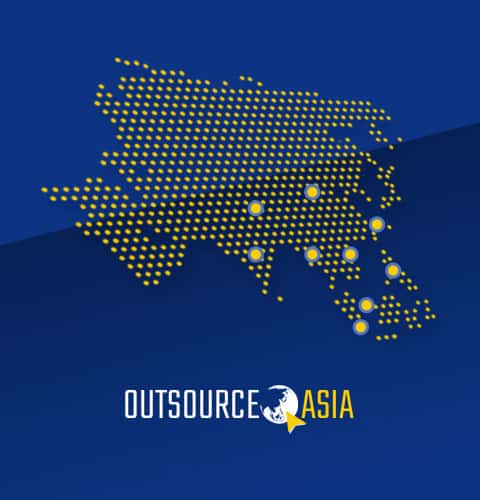
Don’t Make These Common Mistakes in Outsourcing
Outsourcing is a smart business move that can change the way you run your company by giving you access to specialized skills, cutting costs, and making things run more smoothly. But, as with any business plan, it comes with some risks. A lot of businesses, especially those that are new to outsourcing, make the same mistakes that can ruin projects, hurt relationships, and cost money in the end. Let’s go over these mistakes in more depth so that you can make smart choices and build strong outsourcing relationships.
1. The False Promise of the Cheapest Provider
Cost savings are often a primary driver behind outsourcing decisions. While it’s natural to seek competitive pricing, basing your choice solely on the lowest bid can be a grave mistake. Providers offering rock-bottom rates might lack the experienced talent, robust training programs, state-of-the-art infrastructure, or stringent security measures necessary to deliver high-quality results.
Think of it like buying a car. Would you choose the cheapest model without considering its safety features, reliability, or performance? Probably not. The same logic applies to outsourcing. A reputable provider might charge more, but they’ll likely offer superior talent, proven methodologies, and a commitment to quality that ultimately saves you money in the long run.
Actionable Tips:
- Thoroughly Research Providers: Don’t just compare prices. Look into the provider’s experience, expertise, client testimonials, and industry reputation.
- Evaluate the Total Cost of Ownership: Factor in potential hidden costs like rework, delays, and quality issues that can arise from choosing a subpar provider.
- Focus on Value, Not Just Price: Consider the provider’s ability to deliver results, their commitment to quality, and their potential to add value to your business beyond cost savings.
2. Relinquishing Control: Your Vision, Your Way
Outsourcing is a collaborative effort, but you’re still in the driver’s seat. Don’t let a provider pressure you into a solution that doesn’t align with your specific needs and goals. While their expertise is valuable, it’s your business, your vision, and your success at stake.
Before engaging a provider, thoroughly define your requirements, objectives, and desired outcomes. Ask probing questions, seek clarification, and challenge any recommendations that don’t feel right. Remember, you’re not just hiring extra hands; you’re partnering with experts who should tailor their services to your unique needs.
Actionable Tips:
- Clearly Define Your Scope of Work: Document your requirements in detail, including specific tasks, deliverables, timelines, and performance expectations.
- Maintain Regular Communication: Establish a clear communication plan with your provider, including regular meetings, progress reports, and channels for feedback and questions.
- Assert Your Authority: Don’t hesitate to voice your concerns or push back on suggestions that don’t align with your vision. You’re the client, and your input is valuable.
3. The Overlooked Power of Culture and Communication
Outsourcing is about building relationships, not just completing tasks. A strong cultural fit and seamless communication are vital for success. Take the time to understand the provider’s company culture, values, and communication style. Do they align with yours? How do they handle conflicts or unexpected challenges?
A positive working relationship fosters trust, collaboration, and ultimately, better results. Look for a provider who invests in their employees, values open communication, and demonstrates a commitment to building long-term partnerships.
Actionable Tips:
- Conduct Cultural Due Diligence: Learn about the provider’s work culture, values, and communication norms. Consider cultural training for your team if needed.
- Establish Communication Protocols: Agree on preferred communication channels, meeting frequencies, and response times.
- Foster Trust and Transparency: Encourage open dialogue, address concerns promptly, and celebrate successes together.
4. The Perils of Unclear Expectations
Misunderstandings are a breeding ground for frustration and disappointment. Before the project starts, meticulously define your goals, deliverables, timelines, and performance metrics. Don’t leave anything to chance or assume the provider automatically knows what you’re thinking.
Regular check-ins, progress reports, and feedback sessions are essential. They keep everyone on the same page, address any concerns promptly, and ensure the project stays aligned with your vision.
Actionable Tips:
- Create Detailed Project Plans: Break down tasks, set deadlines, and define clear criteria for success.
- Use Project Management Tools: Utilize software platforms for tracking progress, assigning tasks, and sharing documents.
- Provide Regular Feedback: Offer constructive feedback to help the provider understand your expectations and make necessary adjustments.
5. Safeguarding Your Data: A Non-Negotiable
Your company’s data is a precious asset. Entrusting it to an external provider requires utmost confidence in their security measures. Don’t hesitate to ask about their data protection protocols, certifications, encryption methods, and disaster recovery plans.
A reputable provider will prioritize data security and be transparent about their safeguards. They’ll have comprehensive policies in place to prevent breaches, unauthorized access, and data loss.
Actionable Tips:
- Inquire About Security Certifications: Look for providers who are certified in relevant data security standards like ISO 27001.
- Understand Their Data Access Policies: Clarify who has access to your data, how it’s stored, and how it’s protected.
- Conduct Regular Security Audits: Ensure the provider’s security measures are up-to-date and effective.
6. The Importance of Proactive Project Management
Outsourcing doesn’t mean abdicating responsibility. To ensure success, assign a dedicated project manager on your side who can oversee the work, communicate with the provider, and address any issues that arise. This person should be well-versed in the project’s goals and possess strong communication and problem-solving skills.
Regularly review progress reports, track milestones, and provide constructive feedback to the provider. By staying actively involved, you maintain control and ensure the project progresses smoothly toward completion.
Actionable Tips:
- Establish Clear Roles and Responsibilities: Define who’s accountable for each task, who has decision-making authority, and who to contact for specific issues.
- Use Project Management Methodologies: Adopt agile or waterfall methodologies to structure your project and track progress.
- Monitor Key Performance Indicators (KPIs): Track relevant metrics to measure the provider’s performance and identify areas for improvement.
7. Bridging Cultural Divides
Outsourcing often involves working with teams across different countries and cultures. Differences in communication styles, work ethics, and even time zones can lead to misunderstandings and delays. Embrace these differences as an opportunity to learn and grow.
Offer cultural sensitivity training to your in-house team, encourage open dialogue about cultural nuances, and be prepared to adapt your management style. Patience, understanding, and a willingness to learn are essential for building strong cross-cultural relationships.
Actionable Tips:
- Research Cultural Norms: Familiarize yourself with the cultural norms and business practices of the provider’s country.
- Encourage Cross-Cultural Communication: Promote opportunities for your team and the provider’s team to interact and learn from each other.
- Be Flexible and Adaptable: Be open to adjusting your communication style, work hours, and expectations to accommodate cultural differences.
8. Protecting Your Core: Knowing What to Outsource
Your core business functions are the heart of your company. They’re what you do best, what sets you apart from competitors. Outsourcing these functions can lead to a loss of control, diminished quality, and a weakening of your unique value proposition.
Focus on outsourcing non-core tasks that are time-consuming, resource-intensive, or require specialized skills you lack in-house. This frees up your team to focus on what they do best, driving innovation and growth.
Actionable Tips:
- Identify Core vs. Non-Core Functions: Analyze your business processes to determine which are essential to your competitive advantage and which can be safely outsourced.
- Start Small and Scale Gradually: Begin by outsourcing low-risk tasks and gradually expand as you gain confidence in the provider’s capabilities.
- Maintain Oversight of Core Functions: Even when outsourcing non-core tasks, establish clear communication channels and performance metrics to ensure quality and alignment with your goals.
The Final Word: Navigating the Outsourcing Landscape with Confidence
Outsourcing is a powerful tool that can drive significant benefits for your business. However, it requires careful planning, clear communication, and proactive management to avoid common pitfalls. By understanding and addressing the mistakes outlined in this guide, you can forge successful outsourcing partnerships that unlock new opportunities for growth, efficiency, and innovation. Remember, outsourcing isn’t about relinquishing control; it’s about strategically leveraging external resources to enhance your business’s capabilities and achieve your long-term goals.
If you need help in finding the right outsourcing partner, book a FREE APPOINTMENT with Outsource Asia experts today.

